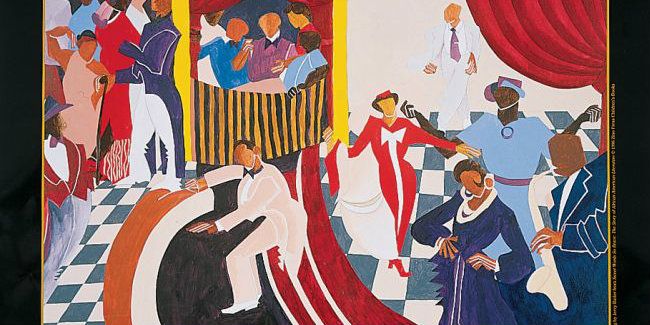Celebrating Women of the Harlem Renaissance
 The renaissance in Harlem was a pivotal point in the existence of people of African descent in America. This “New Negro Movement” created spaces and opportunities for black art and intellectualism to thrive. In an era when women’s rights were often put aside, black women artists, writers, musicians and intellectuals were able to strengthen the voice of the black American. In honor of black history month, we want to recognize and celebrate the black women who opened up the doors for other black women to express and create. These are some of the most influential women of the Harlem Renaissance:
The renaissance in Harlem was a pivotal point in the existence of people of African descent in America. This “New Negro Movement” created spaces and opportunities for black art and intellectualism to thrive. In an era when women’s rights were often put aside, black women artists, writers, musicians and intellectuals were able to strengthen the voice of the black American. In honor of black history month, we want to recognize and celebrate the black women who opened up the doors for other black women to express and create. These are some of the most influential women of the Harlem Renaissance:
Nella Larsen
"Nella Larsen was born to a West Indies-born father and a Danish mother. She was a famous writer during the Harlem Renaissance. Her two novels Quicksand and Passing, were based on gender and racial issues. She became the first African-American woman to win the prestigious Guggenheim Fellowship for creative writing. Her career was cut short with the end of Harlem Renaissance. She devoted the next 30 years of her life, as a supervising nurse in a hospital in New York." Text from Buzzle.
 |
| Source: blackhistorynow.com |
Gwendolyn Bennett
 |
| Source: washingtonart.com |
Georgia Douglas Johnson
 |
| Source: washingtonart.com |
Jessie Redmon Fauset
 |
| Source: www.afropoets.net |
"Jessie Redmon Fauset was born in 1882 in New Jersey. She grew up in Philadelphia and considered herself an O.P. (Old Philadelphian), a term denoting the equivalent of Social Register breeding for African Americans. After graduating Phi Beta Kappa from Cornell in 1905—as one of the first, if not the first, black women to attend that university—she taught French at Washington's Dunbar High School. She received a master's degree in French from the University of Pennsylvania in 1919 and moved to New York that same year. Fauset worked closely with W. E. B. DuBois as literary editor of the NAACP's magazine, The Crisis, and served as editor of another NAACP publication, Brownie's Book, a much-praised children's magazine. From her editorial perch, Fauset became a central force in the Renaissance, nurturing and encouraging many young writers." Text from Poets.org.
Zora Neale Hurston
 |
| Source: biography.com |
"Born in Alabama on January 7, 1891, Zora Neale Hurston spent her early adulthood studying at various universities and collecting folklore from the South, the Caribbean and Latin America. She published her findings in Mules and Men. Hurston was a fixture of the Harlem Renaissance, rubbing shoulders with many of its famous writers. In 1937, she published her masterwork of fiction, Their Eyes Were Watching God. Living in Harlem in the 1920s, Hurston befriended the likes of Langston Hughes and Countee Cullen, among several others. Her apartment, according to some accounts, was a popular spot for social gatherings. Around this time, Hurston experienced a few early literary successes, including placing in short-story and playwriting contests in Opportunity magazine." Text from biography.com.
Angelina Weld Grimké
 |
| Source: afropoets.net |
"Grimké was born into a prominent biracial family of abolitionists and civil-rights activists; the noted abolitionists Angelina and Sarah Grimké were her great-aunts, and her father was the son of a wealthy white aristocrat and a slave. She graduated from the Boston Normal School of Gymnastics in 1902 and subsequently became an English teacher in Washington, D.C., supplementing her education with summer courses at Harvard University. In the early 1900s Grimké began to write articles and poems to express her concern about racism and the plight of blacks in America. Her play Rachel, produced in 1916 and published in 1920, concerns a young woman who is so horrified by racism that she vows never to bring children into the world. Although the play is considered to be overly sentimental and was criticized for its defeatism, it was one of the first plays written by a black author about black issues." Text from britannica.com.
Augusta Savage
 |
| Source: biography.com |
Bessie Smith
 |
| Source: biography.com |
"Bessie Smith was born in Chattanooga, Tennessee. Ma Rainey, the famous blues singer, supported Bessie during her early career. After completing her tour of the South, she moved to New York City in 1923. Her deep, expressive voice had remarkable intensity and power. She recorded with leading jazz musicians including Louis Armstrong, James P. Johnson, and Benny Goodman. She became a popular blues singer and was reported to earn $2,000 a week, during her time. She lost most of her fan following to radio and Hollywood movie music. She became an alcoholic, but still managed to fulfill her singing assignments. Bessie was killed in a car crash in Clarksdale, Mississippi." Text from
buzzle.com.
"Ma" Rainey
 |
| Source: biography.com |
Related:
We Celebrate Ursula Burns 15 Black Women Visual Artists You Should Know Emmett Till, Lil Wayne and the Demise of Black ArtAlexis Jackson is a student studying Creative Writing and Fine Arts at Vanderbilt University. You can reach her at alexis@forharriet.com and follow her @_alexisjacks.

No comments: